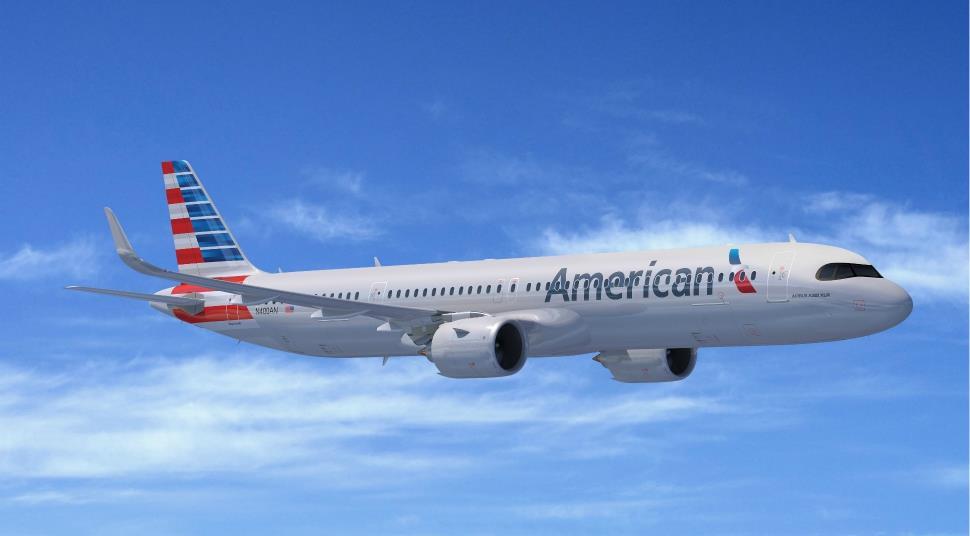Secondo FlightGlobal, le modifiche del 321XLR potrebbero essere estese al 321neo dal 2023
Airbus's revision of the trailing-edge system on the A321XLR will deliver weight and drag improvements as well as a reduction in complexity.
The switch from a double-slotted to single-slotted inboard flap design is one of the key changes being introduced on the XLR. Airbus is planning some innovative features to ensure the new variant's performance is improved.
Double-slotted inboard and outboard flaps were introduced on the original A321 when it was launched in 1989 to ensure that the stretched aircraft retained the A320's take-off and landing performance without compromising commonality with the existing wing design.
Flight International explained in its 1993 technical description that because of its longer fuselage, the A321 "would be able to rotate about 2° less at take-off, which meant a demand for more low-speed lift".
The increased weight of the larger aircraft also required changes to the wing in clean configuration to retain the cruise performance of the A320. As a result, the A321's trailing edge was extended slightly to increase total wing area during cruise from 124sq m to 128sq m. This characteristic will be retained on the XLR.
"We went for a double-slotted configuration [on the original A321] which increases the [lift co-efficient] CLmax for take-off and especially landing," says Airbus head of product marketing Antonio da Costa. "It was more orientated to improving the landing speed."
The original A321-100 had a maximum take-off weight of 83t. There have been subsequent incremental MTOW increases up to 97t on the A321LR which has a range of 4,000nm (7,400km) with 206 passengers. MTOW will rise to 101t on the XLR, which is due to arrive in 2023 with a range of 4,700nm.
The re-engined A320neo-family aircraft, which also incorporate sharklets as part of the upgrade, have lower take-off and landing V-speeds than their original A320 counterparts. "We took the opportunity to optimise the airflow and aerodynamics with the re-engining," says da Costa. He adds that the intention with the switch to the single-slotted inboard flaps on the A321XLR is to reduce weight and complexity without exceeding the V-speeds of the original A321.
"Our [computational fluid dynamics] capabilities have improved a lot since the 1980s so we've been able to design a single-slotted flap that's as efficient as a double-slotted design and gives a similar kind of performance globally, because it also saves some weight."
He adds: "For take-off especially, we're reducing drag in the second-segment climb."
Another new feature being introduced on the XLR's flap system is the ability to set the surfaces at intermediate positions, depending on operating conditions.
"Like on the A350, we will have intermediate flap positions controlled by the FMS, so instead of just having four fixed positions there will be intermediate settings which will help in the second-segment climb," da Costa says. "In 'Flaps 1' and 'Flaps 2', controlled by the FMS, [depending on weight and other factors], there are intermediate positions – for example a kind of '0.5' and '1.5' setting."
A benefit of the reduction in the design's complexity is that there are fewer moving parts and therefore lower maintenance costs, says da Costa, but he declined to specify the amount of weight saved. He says the new design will be flight-tested on an A321neo development aircraft ahead of the completion of two XLR prototypes, one for each powerplant option.
Although all other A320-family variants have single-slotted flaps, da Costa says the A321XLR's inboard system will be unique to that variant. He adds that Airbus is yet to decide whether to adopt the revised design as a block change for all A321neo variants when it is introduced in 2023.
The A321XLR will have adapted wheels and brakes which will allow slightly higher take-off speeds. "This will improve take-off climb performance in certain situations," says da Costa.
Airbus intends that the A321XLR will be offered with the same engine thrust values as today's LR. However, Air Lease executive chairman Steve Udvar-Hazy tells FlightGlobal that he is pushing the engine OEMs for "a little more thrust".
https://www.flightglobal.com/news/a...airbus-is-redesigning-the-a321xlr-hig-459156/




